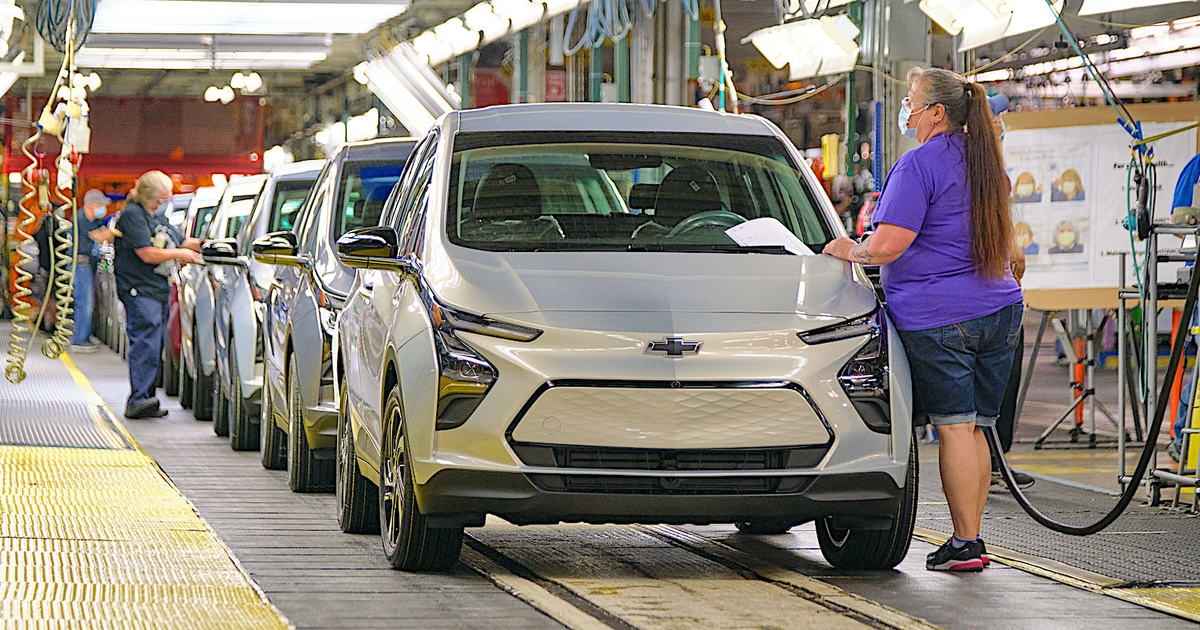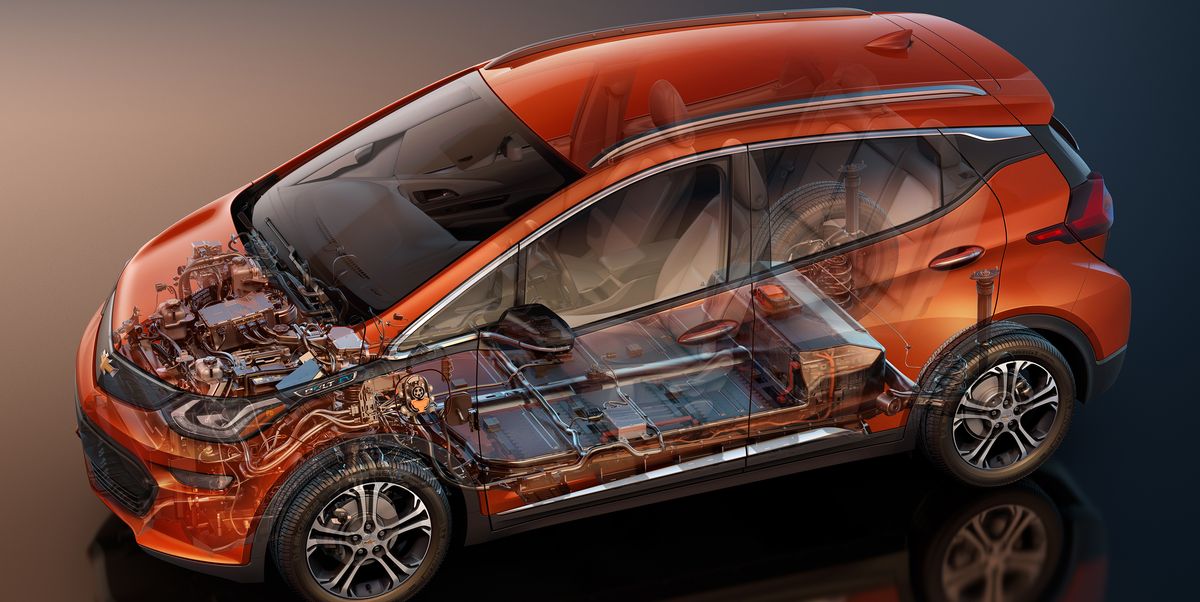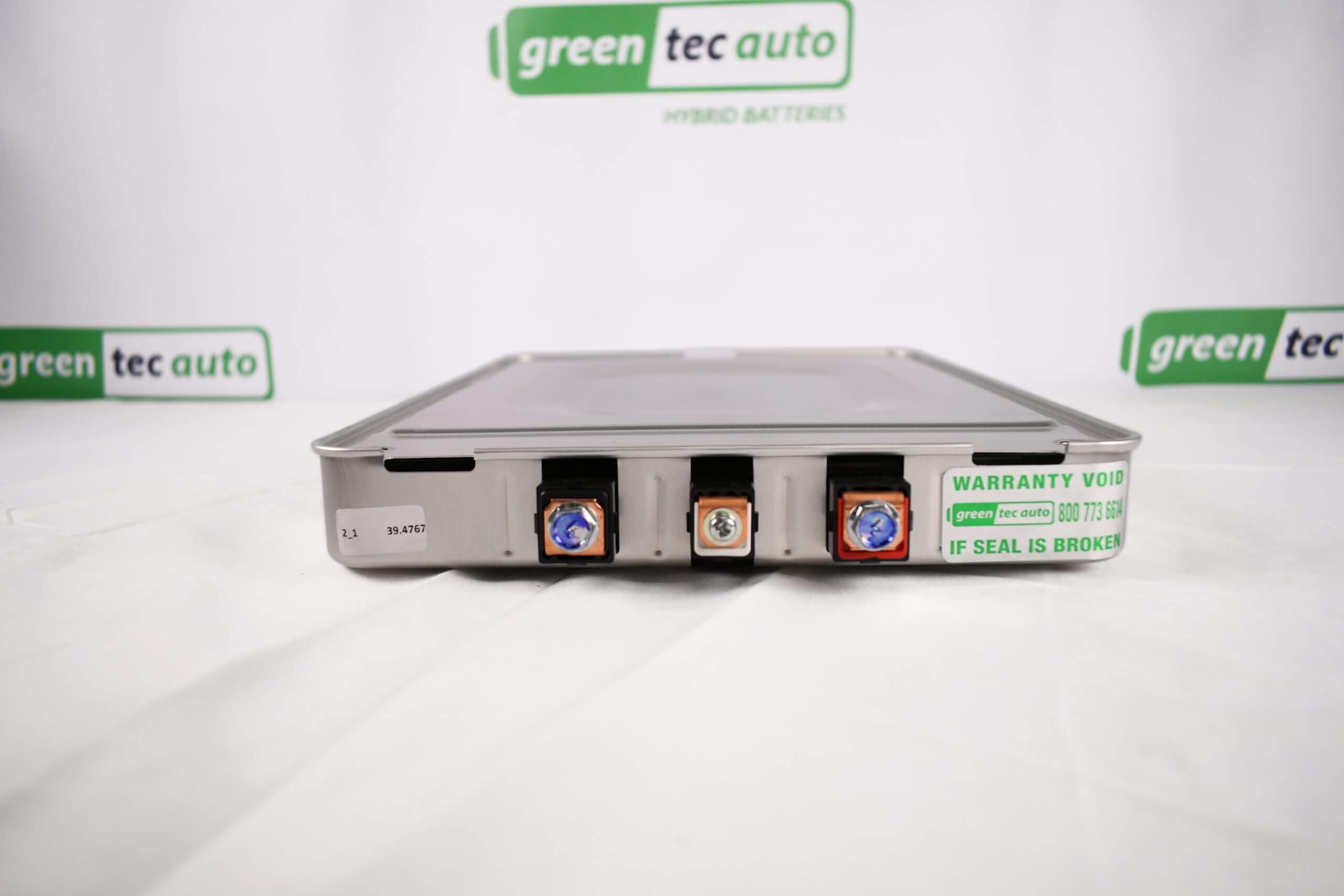This has nothing to do with cylinder vs. pouch other than shoddy QA/QC by LGChem.
Expansion and contraction of the pouch is suspected of exacerbated the shorting problem.
This has nothing to do with cylinder vs. pouch other than shoddy QA/QC by LGChem.
Expansion and contraction of the pouch is suspected of exacerbated the shorting problem.

The company acknowledged that the underlying cause of the battery fires was a combination of manufacturing defects. If the battery’s anode is torn during the assembly process, and one of the cell separators also gets a fold in it, that cell was at risk for a fire.

LG Chem Finds the Solution to its Chevrolet Bolt EV Battery Problems
GM suspended Chevrolet Bolt EV production in August due to battery fires.www.designnews.com
Funny. Seems LG Chem has claimed they messed up is all.

There’s a lot of assumptions baked into that.Pouch cells are integrated in modules and are far easier to repair than Tesla packs.
More often we see "hobbling" of the car from either a charge or discharge perspective to protect the battery.
BMW limits concurrent high speed charges after 2-3 (its not clear) the car goes into a highly reduced state of charge that Bjorn describes as slower than a leaf. This is likely one of the reasons why they have chosen to switch form factors.
Ford severely hobbled its Mach E GT to a maximum of 5 seconds of full throttle output because of heat issues. - This came as a very nasty surprise to the first customers who expected competitive performance.
Now it "appears" GM may be switching to cylindrical...
I think it should be noted, Tesla’s LFP packs are prismatic cells, not cylindrical. Even Tesla doesn’t demand cylindrical cells. In Q1 2022 nearly half the cars they made had prismatic LFP cells.
Half Of All Teslas Manufactured In Q1 Have LFP Batteries - CleanTechnica
LFP batteries are Tesla's response to raw materials shortages.cleantechnica.com
This is the shanghai produced car ONLY.
LFP and prismatic aren't synonymous - tesla also uses LFP cylindrical.
Im pretty sure Telsa was informed about how they felt about using CATL as the supplier in this instance.

 electrek.co
electrek.co
I’m not suggesting they are. Just that I’ve seen zero reference that Tesla uses LFP cylindrical. (Do you have one?)
This article says, at least early-on, the Standard Range LFP cars in the USA were getting their cells from China.

Tesla is moving Model 3 Standard Range to LFP cells in Fremont, wants cell production closer
Tesla confirmed that it is moving Model 3 Standard Range production to Lithium Iron Phosphate (LFP) battery cells at Fremont...electrek.co

It isn’t good practice to replace a pouch. Maybe the process of de welding the pouch tabs from a conectorEase of repair goes to the pouch.
Likelihood of failure also goes to the pouch.
Yeah - thats going to mess with the balance - unless you can find one aged similarly.It isn’t good practice to replace a pouch. Maybe the process of de welding the pouch tabs from a conector
Is easier than a ton of small cells, but that’s why larger cells are desired.
Replacing a cell is asking for trouble.

Anyone who has manufactured cells knows this.I don't know that you can say that. Do you have actual data on this? The failure in both is actually pretty rare, and the early EV's which used pouches were air cooled, so comparing them to early Tesla's really isn't a sensible comparison to make.
 cleantechnica.com
cleantechnica.com

For pure durability reasons, cylinder is best. For packaging reasons, pouch is best. Good pouches last just fine. Good cylinders last just fine. Pouch cells have the advantage of very low internal resistance, as well. A PROPERLY designed pouch pack is superior, IMO. It is also much more modular. Ultimately, though, buy a warranty. Anything can happen. Just like with turbos or the hundreds of sliding, spinning surfaces in a gas burner.Looking at capacitors, it is not surprising that manufacturers would gravitate to cylindrical cells. Electrolytic capacitors are overwhelmingly cylindrical for some similar reasons, if not exactly the same.
AFAIK, Nissan is using the similar pouch cells in the Leaf and maybe Ariya - and the former is air-cooled. The metal tube with cylindrical cells also is a better conductor of heat.And the Mylar pouch cells aren’t exactly the ideal thermal management case…
Pouches are fine. Some company's designs, are not.
Surprise! Nissan LEAF Batteries Last Much Longer Than Expected - CleanTechnica
If you are worried about the battery in your Nissan LEAF, don't be. Those batteries are lasting much longer than expected.cleantechnica.com
The original usable AH per module was about 43. These appear to offer 34-38. That places them at near 80% SoH. I'd say that's excellent for over a decade old, and in a pack with only air cooling, and no fan to supplement.
Gen1 Nissan LEAF Battery Module 7.6V | Greentec Auto
7.6V 64Ah Nissan LEAF Battery Module. Use for Golf cart conversions, EV builds, Solar Storage, and more. Replacement battery modules fits Gen1 Leafwww.greentecauto.com
